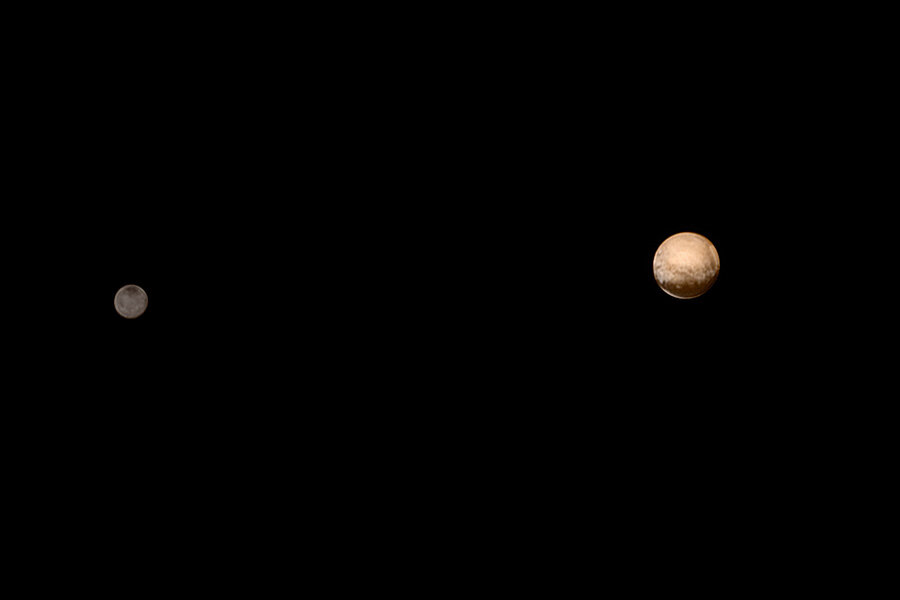Pluto in T minus 24 hours: Four surprising facts about the dwarf planet
Loading...
At 7:49 am EDT Tuesday morning, the New Horizons mission is estimated to make its Pluto flyby, marking the high point of a journey that began almost ten years ago. By Monday night, the mission will be less than one million miles away, a short distance compared to the 3.6 billion mile journey thus far. The New Horizons missions set to zoom past the dwarf planet at 31,000 miles per hour in what's been, "an epic journey across the solar system," said Alan Stern, the New Horizons principal investigator in a talk to employees at the Kennedy Center in Florida.
Here are four surprising facts about the New Horizons mission:
1. Pluto is no longer defined as a planet
In 2006, the International Astronomical Union voted to change the official status of Pluto from that of a planet to the new “dwarf planet” category in a highly contentious move. The primary distinction between a planet and a dwarf planet is dwarf planets do not clear the neighborhood around their orbit, while planets do.
2. A man’s ashes are aboard the mission.
A small amount of the ashes of American astronomer Clyde Tombaugh are on the mission headed to the dwarf planet. Mr. Tombaugh discovered the planet Pluto on February 18, 1930. The self-taught astronomer was able to work at the Lowell Observatory before attending college because his hand-created telescopes and power of observation impressed the staff at the observatory. He requested that his ashes be sent into space, and his wish was granted when the New Horizons mission launched in 2006.
3. You can ride aboard the mission using “NASA’s Eyes on Pluto.”
NASA has created an interactive application that allows users to “ride” on the historic mission. Using NASA’s "Eyes on Pluto" feature, even non-astronauts can join along while the mission comes within 6,200 miles from the surface of the dwarf planet. The pictures on the application will show, “where the spacecraft is looking and what its advanced instruments can see,” according to the "Eyes on Pluto" website.
4. The journey is not over after the Pluto flyby.
While anticipation for this unprecedented moment has built up for the past ten years, the mission will not return directly to Earth after the Pluto flyby. Currently, New Horizons is scheduled to explore other Kuiper Belt Objects beyond Pluto after Tuesday morning’s brush with history.
"The spacecraft is performing flawlessly, so is the instrument suite and we are on schedule for arrival." said Stern on Saturday. A total of seven instruments on board will be collecting data throughout the time that the mission approaches the tiny planet the size of the United States. However, “New Horizons' communications antenna is fixed to the craft, so the craft must reorient itself to properly aim the antenna at Earth. Any attempt to communicate with Earth during the flyby's most critical period would mean pulling the instruments off their targets,” reported The Christian Science Monitor’s Pete Spotts on Sunday.
“After nine and a half years in flight, Pluto is well worth the wait,” said Stern on Saturday.
The event will be covered on NASA TV.








